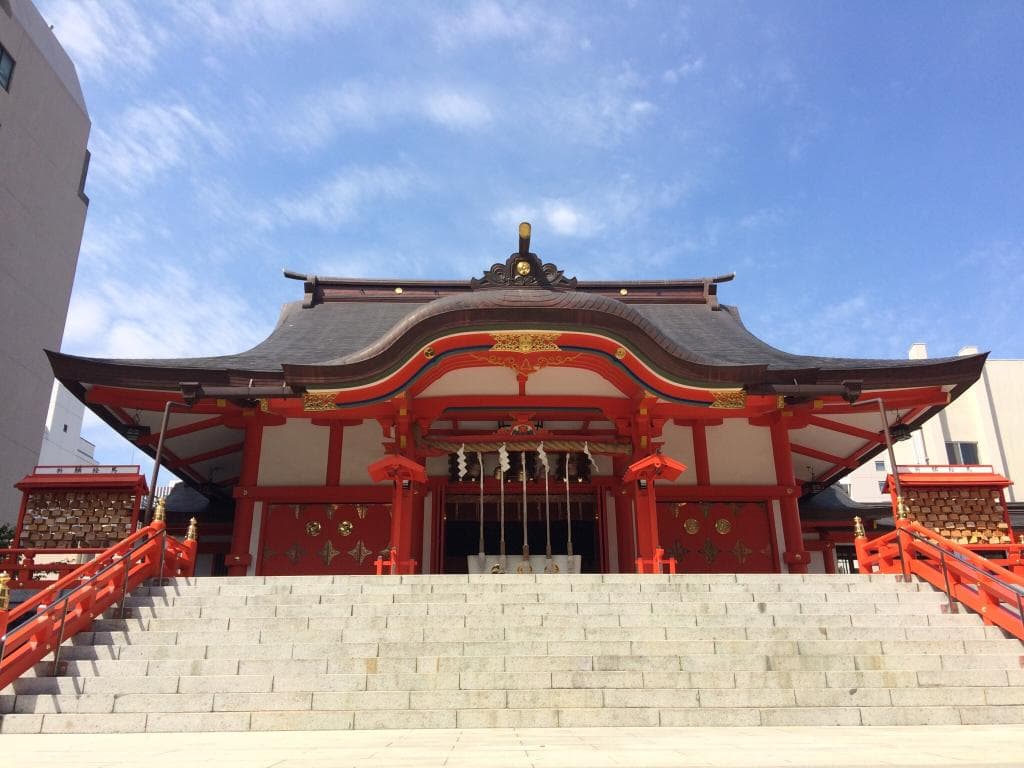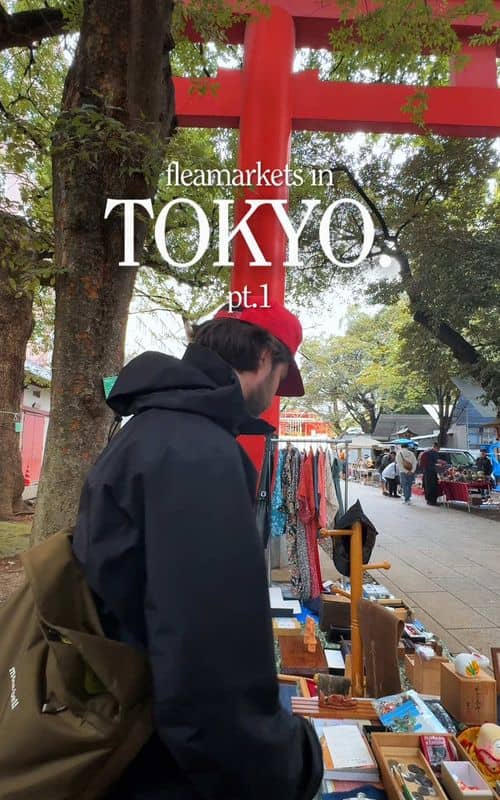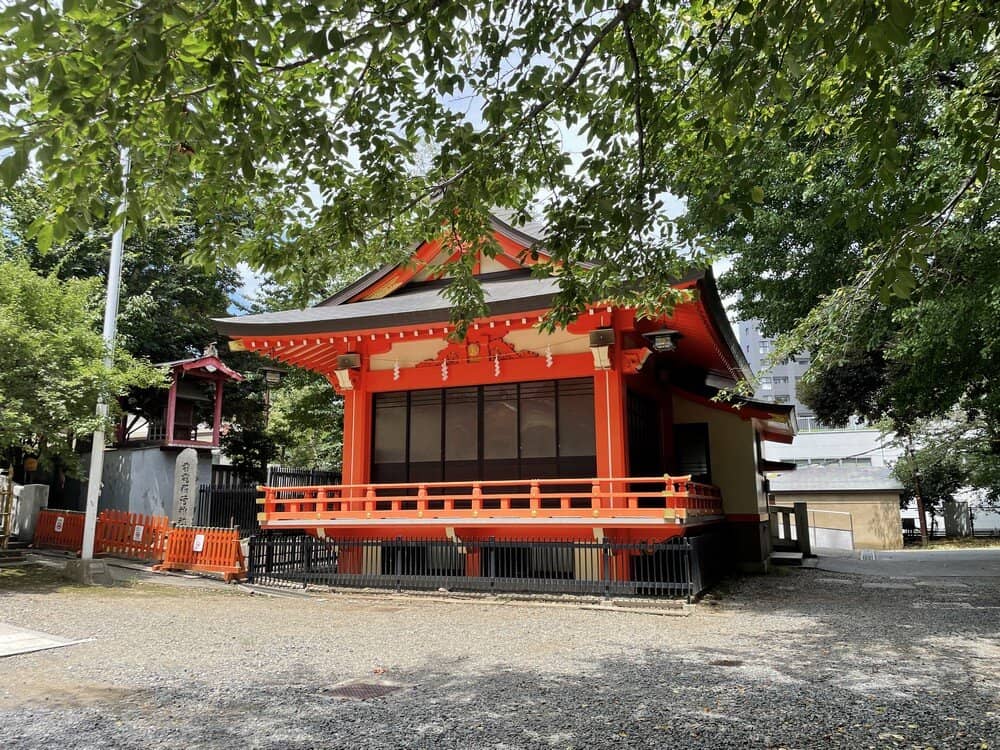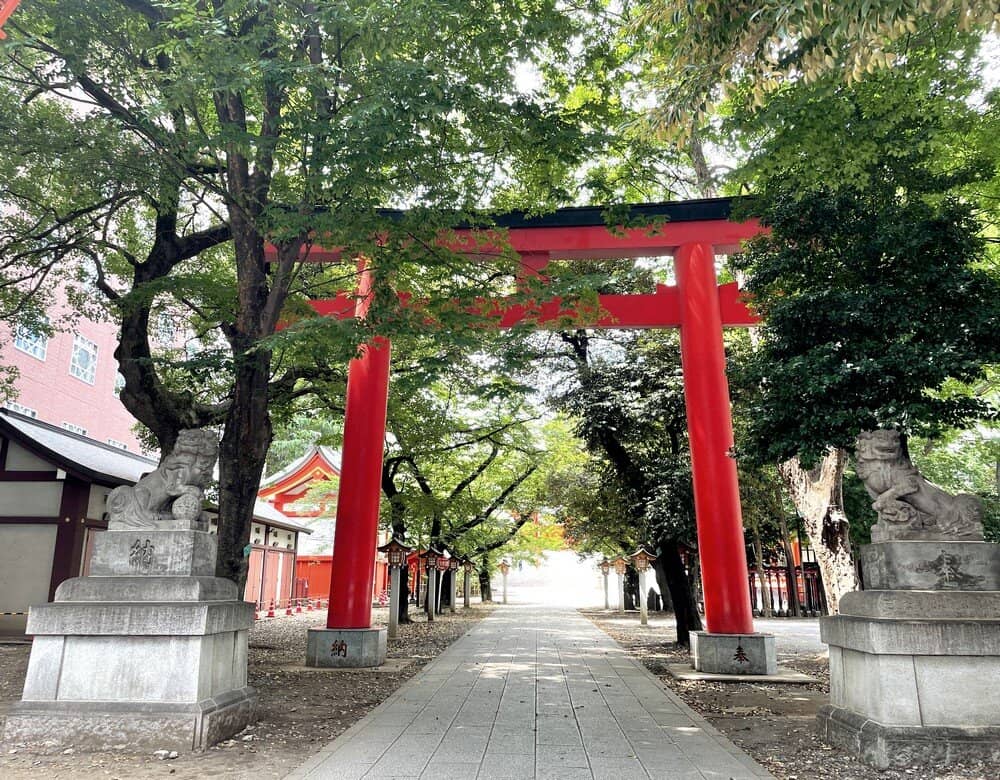
Hanazono Shrine Tokyo
A serene Edo-period Shinto shrine in Shinjuku, offering a peaceful escape and a charming antique market on select days.

Highlights
Must-see attractions

Social
From TikTok & Reddit
Best Time
Unique finds & local vibe

Hanazono Shrine Tokyo
Best Time
Unique finds & local vibe

Highlights
Must-see attractions
A serene Edo-period Shinto shrine in Shinjuku, offering a peaceful escape and a charming antique market on select days.
"A quiet, low-key shrine with history, not usually overrun by tourists. "

🎯 Low-key Local Gem
A peaceful, less crowded shrine perfect for a quiet moment.
📅 Check Market Dates
Antique markets are held on specific dates; check beforehand!

Highlights
Discover the most iconic attractions and experiences

The Main Shrine Hall
Central Shrine Area
Experience the spiritual heart of this historic Edo-period Shinto shrine. A peaceful sanctuary in bustling Shinjuku.

Antique Market
Shrine Grounds
Discover unique vintage finds and local crafts at this charming market, held on select dates.

Protective Charms & Arrows
Shrine Stalls
Purchase traditional amulets and shinto arrows for good fortune and protection.
Plans like a pro.
Thinks like you
Planning Your Visit
Escape the Shinjuku Hustle
Market Days & Shrine Visits
Best Times
Insider Tips
from TikTok, Instagram & Reddit
🎯 Low-key Local Gem
A peaceful, less crowded shrine perfect for a quiet moment.
📅 Check Market Dates
Antique markets are held on specific dates; check beforehand!
🚶♀️ Near Golden Gai
Conveniently located near Golden Gai for easy exploration.
🙏 Respect Customs
Be mindful of shrine etiquette and maintain a respectful demeanor.
Tips
from all over the internet
🎯 Low-key Local Gem
A peaceful, less crowded shrine perfect for a quiet moment.
📅 Check Market Dates
Antique markets are held on specific dates; check beforehand!
🚶♀️ Near Golden Gai
Conveniently located near Golden Gai for easy exploration.
🙏 Respect Customs
Be mindful of shrine etiquette and maintain a respectful demeanor.
What Travellers Say
Reviews Summary
Visitors praise Hanazono Shrine for its tranquil atmosphere, offering a peaceful escape from Shinjuku's hustle. Its convenient location and the charm of its antique market are frequently highlighted. Some find the shrine's size modest, but its authenticity and local feel are highly appreciated.
"This is a beautiful temple in Shinjuku. Little quieter and not as busy. We wanted to visit a temple at night, just to see one a little different. Very few people were here at 9 pm, but they were still working, where you buy your prayers to hang. My wife has been collecting stamps, so she was able to get her booked stamp, and then they wrote some characters in it as well. There was a play going on in a tent next to it, that sounded like a lot of fun."
Anthony Couillard
"I don’t think I’ve ever been to Hanazono Shrine before. In fact, I didn’t even know there was a shrine tucked away just steps from Golden Gai. It always fascinates me how temples and shrines in Japan exist so close to the chaos, glamour, and indulgence of the city.
By pure luck, my visit to Japan happened to coincide with the Tori no Ichi festival. Even luckier, I had booked a hotel in Shinjuku that weekend. It had been decades since I last experienced a matsuri, so this was an unexpected delight.
Countless yatai (food stalls) sprawled around the shrine, lining different alleyways with a variety of foods, drinks, and sights to take in. If you don’t enjoy crowds, this festival may not be for you. I found myself moving at a snail’s pace, and once you enter the main alley, there’s no turning back. Like it or not, you’re going all the way to the shrine.
I tried wagyu skewers and classic takoyaki, but there were plenty of other festival favorites like yakisoba, okonomiyaki, and shaved ice. It was a wonderful night, bringing back nostalgic memories.
If you’re planning a trip to Japan in November, I highly recommend visiting the Tori no Ichi festival in Shinjuku."
John Kim
"Hanazono Shrine 花園神社, Hanazono Jinja in Japanese, is a large, ancient Shinto shrine in the very heart of Tokyo's Shinjuku district. It is considered the most important shrine of Shinjuku, the shrine guarding the area, its inhabitants, merchants, craftsmen and artists. Though surrounded by modern buildings, the shrine itself is quiet and serene. Its main building, the honden, stands on top of a stone staircase, overlooking the small wooded park belonging to the shrine.
It is quiet and serene on most days of the year. However, the shrine features several large festivals during the course of the year, on those days expect big crowds on the grounds. The shrine is also very popular during the sakura cherry blossom season in late March / early April due to its many cherry trees. In the evening, the shrine is colorfully lit up and invites a romantic stroll. The origins of the shrine are unknown. It is known, however, that the shrine already existed in 1590, when Ieyasu Tokugawa took over Edo, today's Tokyo. Soon after, in 1603, Ieyasu established Edo as the capital of Japan, ushering in the Edo Era (1603-1868). At that time, the shrine was at a slightly different location, however, on the grounds now occupied by the Isetan Department Store.
Located only a few minutes on foot from Shinjuku Station on the Yamanote Line and the Kabukicho entertainment district, the shrine is somewhat hidden behind buildings lining Yasukuni Dori Avenue. Take the East Exit of Shinjuku Station, walk towards Kabukicho. On Yasukuni Avenue, turn right and walk towards Shinjuku 2-chome (Tokyo's gay quarter). After about a two minute walk, you will see a small alley to your left, framed by a stone torii gate. It is located between a Family Mart convenience store and the Tsukiji Sushiko sushi restaurant. Enter the tree-lined alley. It will lead you right into the center of Hanazono Shrine. Alternatively, enter the shrine through its big red torii gate from Meiji Dori Avenue."
Doug Ho
What People Like
What People Dislike
Frequently Asked Questions
🚇 🗺️ Getting There
Hanazono Shrine is easily accessible from Shinjuku Station. Take the South Exit and walk for about 10-15 minutes. It's also a short walk from the Golden Gai area.
Yes, it's very close to popular spots like Shinjuku Gyoen National Garden and the vibrant Golden Gai nightlife district.
Absolutely! It's a pleasant walk through the city streets, offering a glimpse of Shinjuku's urban landscape before reaching the shrine.
The closest stations are Shinjuku Station (JR lines, subway) or Shinjuku-sanchome Station (Marunouchi and Shinjuku lines). From there, it's a short walk.
Parking is generally limited in this busy area. It's highly recommended to use public transportation to reach the shrine.
🎫 🎫 Tickets & Entry
No, entry to Hanazono Shrine is free. You can wander the grounds and admire the shrine without any admission fee.
The shrine grounds are generally open from early morning until dusk. Specific building access might vary, but the outdoor areas are accessible throughout the day.
Entry to the antique market itself is usually free, but you'll need to pay for any items you wish to purchase.
While the main shrine buildings may close, the outer grounds are often accessible until late evening, offering a different, more tranquil atmosphere.
While there's no strict dress code, it's advisable to dress respectfully, as you would for any place of worship.
🎫 🧭 Onsite Experience
You can see the main shrine buildings, various smaller shrines, torii gates, and during market days, a collection of antique stalls.
Yes, the shrine offers a blend of traditional architecture and serene nature, making it a picturesque spot. The antique market also provides unique photo opportunities.
Hanazono Shrine hosts various seasonal festivals throughout the year, offering a glimpse into local traditions and celebrations.
Yes, you can purchase protective charms (omamori) and shinto arrows (hamaya) from the shrine stalls for good luck.
Despite its Shinjuku location, Hanazono Shrine is known for its low-key and serene atmosphere, making it ideal for a peaceful escape.
📸 📸 Photography
Capture the main shrine hall, the torii gates, and the lush greenery. The antique market stalls offer vibrant and unique subjects.
Photography is generally permitted on the shrine grounds, but it's always best to be discreet and respectful, especially near the main worship areas.
Early mornings offer softer light and fewer crowds, while late afternoons can provide a warm, golden glow. The market days offer dynamic scenes.
Drone usage is typically prohibited at religious sites in Japan to maintain peace and respect. Always check local regulations.
A versatile lens like a 24-70mm is great for general shots. A wider lens can capture the shrine's architecture, and a prime lens is good for low light.
For Different Travelers
Tailored advice for your travel style
👨👩👧 Families with Kids
Consider visiting on a weekday morning for the calmest experience. While there aren't specific child-focused activities, the simple act of observing the rituals and the unique market stalls can be educational and engaging for younger visitors. Remember to explain basic shrine etiquette, like bowing and washing hands, to make it a meaningful experience.
🚶 Budget Travelers
While the shrine itself is free, the antique market offers opportunities for affordable souvenir hunting. You can find unique trinkets and crafts at reasonable prices. Combine your visit with a walk through the surrounding Shinjuku area, which also offers many free sights and experiences.
Deep Dives
In-depth insights and expert knowledge
The Charm of Hanazono Shrine's Antique Market
This market is a testament to the shrine's role as a community gathering place, extending beyond its religious functions. The atmosphere is lively yet retains the shrine's inherent tranquility. For those interested in Japanese culture and history, the market offers a tangible connection to the past, with many items carrying stories and craftsmanship from bygone eras.
Hanazono Shrine: A Peaceful Oasis in Shinjuku
Despite its compact size, Hanazono Shrine is steeped in history and tradition. Visitors can explore its main hall, admire the intricate details of its architecture, and soak in the spiritual ambiance. The presence of protective charms and shinto arrows available for purchase adds to the authentic experience, allowing visitors to take a piece of the shrine's blessings with them.






Social
from TikTok, Instagram & Reddit